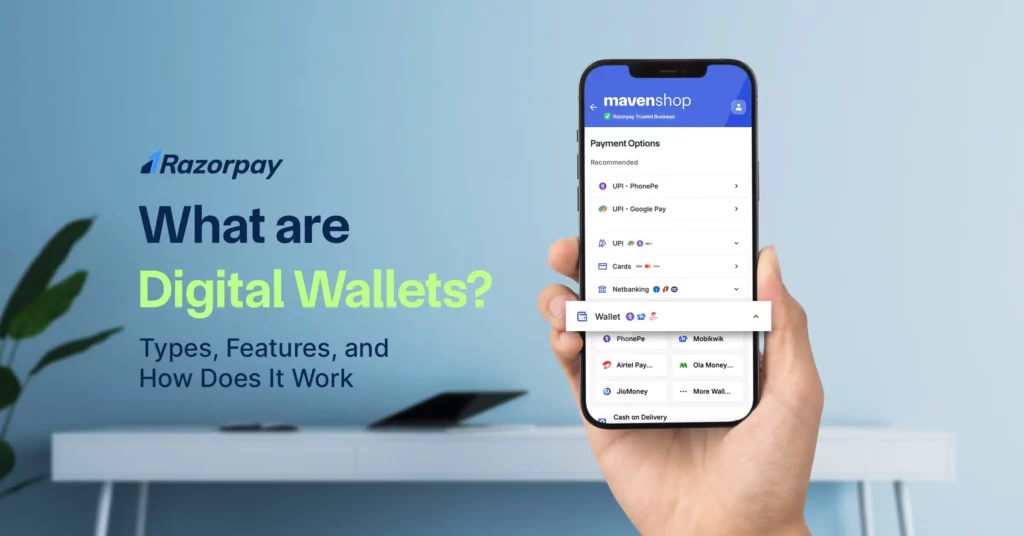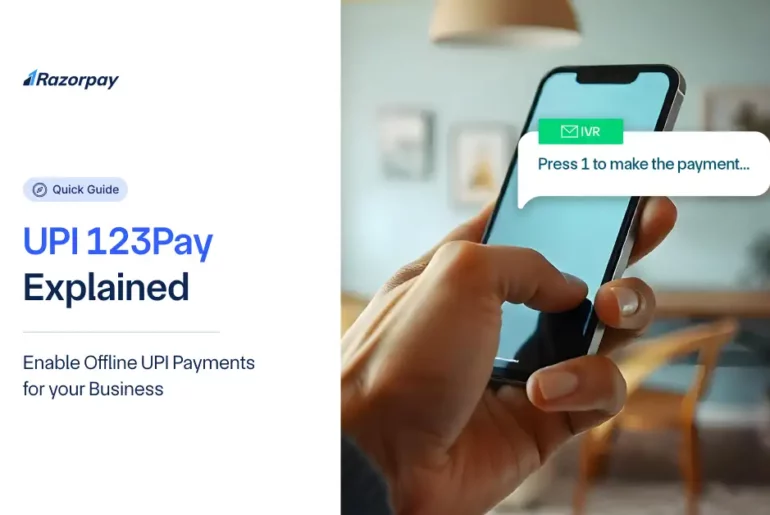Today, financial interactions have shifted from tangible forms of money to digital alternatives. This shift has significantly reduced the need for carrying physical cash or swiping cards.
In this article, we aim to offer a comprehensive understanding of digital wallets, covering their functionality, features, benefits, and factors to consider when selecting the most suitable one for you.
Table of Contents
What is a Digital Wallet?
A digital wallet, also known as an e-wallet or online wallet, is a software-based system or application that stores various types of payment information, such as credit card details and bank account information, within the app. This allows you to make electronic transactions.
It acts as a bridge between traditional payment methods and the digital realm, allowing you to perform transactions conveniently through computers, smartphones, or other connected devices. Think of it as a digital version of your physical wallet with enhanced functionalities and security measures.
Related Read: What is Mobile Wallet and How to Use it?
Types of Digital Wallets with Examples
1. Closed Wallets
They are issued by specific merchants and can only be used for transactions within that merchant’s ecosystem.
Examples of Closed Digital Wallets
- Starbucks app
- Amazon Pay
2. Semi-Closed Wallets
They can be used for transactions within a defined group of merchants, usually partnering with multiple vendors.
Examples of Semi-Closed Digital Wallets
- Paytm
- Venmo
- Google Pay
3. Open Wallets
These are usually issued by banks and enable transactions across a wide array of merchants.
Examples of Open Digital Wallets
- Apple Pay
- HDFC PayZapp
- ICICI Pockets
4. Cryptocurrency Wallets
Designed for holding cryptocurrencies, these wallets store private keys and facilitate crypto transactions.
Examples of Cryptocurrency Digital Wallets
- Coinbase
- MyEtherWallet
Features and Uses of Digital Wallets
1. Contactless payments
Contactless payments uses NFC technology, you can make NFC mobile payments by simply tapping your smartphone or smartwatch at NFC-enabled payment terminals.
2. Bill payments and recharges
Digital wallets enable you to pay utility bills, recharge mobile phones, and top up other services with just a few clicks.
3. Peer-to-peer (P2P) transfers
You can transfer funds to friends and family instantly, eliminating the need for traditional cash or cheque transfers.
4. Loyalty cards and rewards
Many wallets integrate loyalty programs, allowing you to accumulate rewards points and discounts for future purchases.
5. Expense tracking
Digital wallets often offer features to track spending habits and categorize expenses, helping you manage your finances more effectively.
6. Security
Biometric authentication, multi-factor authentication, and tokenisation techniques make digital wallets highly secure, reducing the risk of fraud.
7. Cross-border transactions
Some wallets, when integrated with an international payment gateway, support cross-border transactions and currency conversions, making it easier for travelers and businesses to transact globally.
Related Read: What is NFC? Features, Components, How Does It Work with Examples
How Does a Digital Wallet Work?
A digital wallet has two main components: software and information.
Software Component
The software component is the app you download and register with your details on your device. It lets you link your e-wallet to your bank accounts, credit cards, debit cards, loyalty cards, coupons, and other payment methods.
It also encrypts and secures your data, generating a unique code for each transaction.
Information Component
The information component is the data you provide to the app and the data generated by the app. It has your name, address, phone number, email, payment preferences, transaction history, and other relevant details. It also contains the codes used to authenticate and authorize your payments.
The working of a digital wallet involves a blend of encryption, authentication, and seamless integration with various payment gateways such as Razorpay.
What are Technologies Used by Digital Wallets?
1. Near Field Communication (NFC)
This technology uses radio waves to connect devices over a very short distance. It is fast, secure, and requires physical contact or proximity.
2. Bluetooth
This wireless technology uses radio waves to connect devices over a short distance. It is fast, secure, and does not require physical contact or an Internet connection.
3. WiFi
This wireless technology uses radio waves to connect devices over a local area network. It is fast, secure, and requires an Internet connection.
4. Magnetic Secure Transmission (MST)
This technology emits a magnetic signal that mimics a card’s magnetic stripe. It is compatible with most existing card readers and does not require an Internet connection.
How to Use Digital Wallets?
STEP 1: Registration
Download and install a digital wallet app from a trusted provider.
After installation, you’re required to create an account, which usually involves providing personal information and linking your payment sources.
STEP 2: Adding funds
Once the account is set up, you can add funds to your digital wallet by linking your bank accounts and debit or credit cards, or by receiving transfers from other users.
Some wallets also support cryptocurrency integration.
Integrating Razorpay into the digital wallet offers you a diverse range of payment options, including credit cards, debit cards, and NetBanking.
STEP 3: Transaction
When making a purchase or payment, you can select your digital wallet as the preferred payment method.
The payment wallet securely stores the payment information, and you typically need to authenticate the transaction using methods like a PIN, biometrics, or a password.
STEP 4: Authentication and encryption
Digital wallets employ strong encryption techniques to protect sensitive data. Authentication methods like a passcode, fingerprint recognition, or facial recognition provide an additional layer of protection.
STEP 5: Communication with payment gateways
The wallet communicates with payment gateways such as Razorpay to facilitate the transaction.
This involves transmitting encrypted data, verifying the transaction’s legitimacy, and authorizing the payment.
STEP 6: Confirmation
After successful authorization, both the sender and the recipient receive confirmation of the transaction. The wallet balance is updated accordingly.
Read More: What is Payment Gateway and How Does it Work?
Benefits of Digital Wallets
1. Customer Convenience
The Transactions accessible through smartphones, you can make payments, transfer money, and shop online without carrying physical cards or cash.
2. Contactless Transactions
In a world increasingly focused on hygiene post-COVID-19, contactless payments through digital wallets provide a safer option compared to handling physical currency.
3. Faster Transaction
Digital wallets facilitate instant transactions, eliminating the need for manual input and reducing waiting times.
4. Encrypted Financial Informations
Advanced security measures ensure that your financial information remains encrypted and protected against potential breaches.
5. Expense Tracking Features
Wallets often come with budgeting tools and expense-tracking features. This helps you maintain better control over your spending.
6. Reward Programs
Many digital wallets offer rewards, discounts, and cashback incentives, making transactions more cost-effective.
7. Access to the unbanked population
Digital wallets can extend financial services to individuals who lack access to traditional banking infrastructure.
Disadvantages of Digital Wallets
1. Dependency on technology
Digital wallets rely heavily on technology and connectivity. A lack of Internet access or technical glitches can hinder their usability.
2. Security concerns
While security measures are in place, digital wallets can still be vulnerable to hacking and cyberattacks, thus compromising financial data.
3. Limited acceptance
Not all merchants and vendors accept digital wallet payments, limiting their usability in certain situations.
4. Transaction fees
Some digital wallet services may charge transaction fees, particularly for cross-border transactions or transferring funds between different wallets.
How to Choose the Best Digital Wallet?
Selecting the right digital wallet requires careful consideration of factors such as security, convenience, compatibility, and reputation.
Here’s a simple guide:
1. Security measures
Prioritise wallets that offer strong encryption, multi-factor authentication, and biometric verification.
2. Compatibility
Ensure the wallet is compatible with your device’s operating system and can be used at your preferred merchants.
3. User reviews
Look for reviews and ratings from other users to get an idea of the wallet’s reliability and performance when it comes to digital payment.
4. Supported services
Consider whether the wallet supports the services you need, such as bill payments, online shopping, and international transactions.
5. Ease of use
A user-friendly interface and intuitive navigation are essential for a smooth customer experience.
Conclusion
In conclusion, digital wallets have revolutionized the way we pay, offering unparalleled convenience, security, and efficiency. As technology continues to advance, we can expect digital wallets to become even more integrated into our daily lives, shaping the future of commerce.
Frequently Asked Questions (FAQs)
1. Are UPI and digital wallets the same?
UPI is a real-time payment system that directly links bank accounts, while a digital wallet is a virtual storage for various payment methods.
2. What is the difference between a digital wallet and UPI?
Digital wallets and UPI are both digital payment methods, but they differ. UPI is a system that directly links your bank account for instant transfers, while digital wallets act as intermediaries, storing money before transactions. Think of UPI as a direct pipeline between banks, while digital wallets are like digital pockets holding your money.
3. Why do I need a digital wallet?
Digital wallets offer convenience, security, and speed for your payments, replacing the need for physical cards while often providing additional features like loyalty rewards and mobile payments.
4. What is the risk of using a digital wallet?
While online wallets offer security features, there are potential risks associated with their use. These include security breaches, access to your wallet in case a device is lost or stolen, phishing and scams, and transaction errors.
5. Are digital wallets free?
Many digital wallets are free to use and download. However, some wallets may charge fees for specific services, such as cross-border transactions, currency conversions, or transferring funds to a bank account.
6. Can I have a wallet without a bank account?
Yes, you can have a digital wallet without a bank account. Some digital wallets, especially closed or semi-closed wallets, allow you to load funds onto the wallet without a direct link to a bank account.



